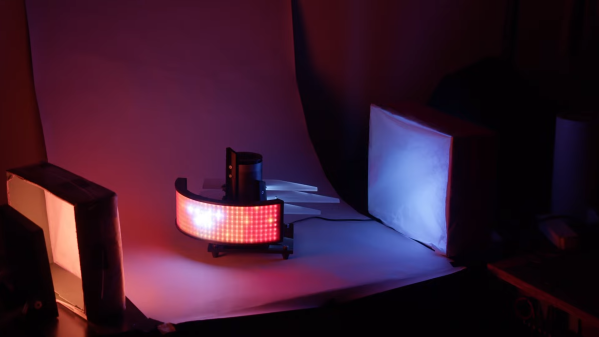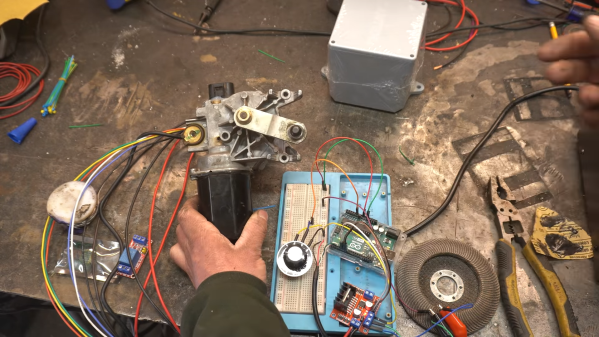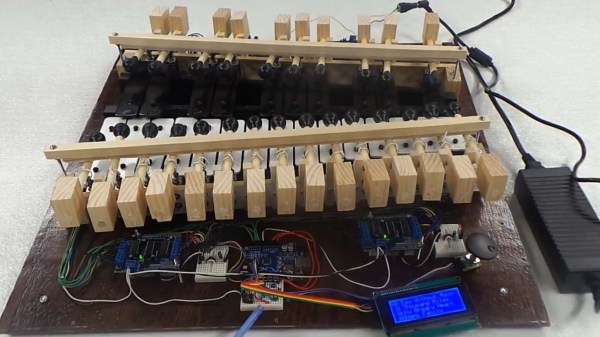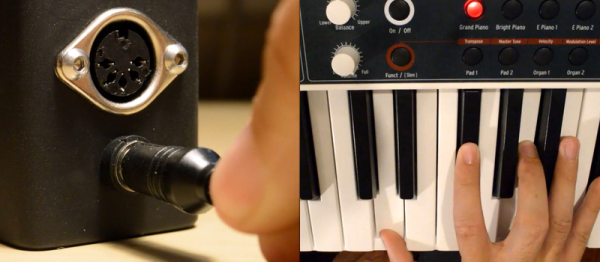Oh, perfect — now our cars can BSOD. At least that’s how it looks from a forum post showing a Blue Screen of Death on a Ford Mustang Mach E, warning that an over-the-air software update failed, and now the car can’t be driven. The BSOD includes a phone number to reach Ford’s Customer Relationship Center and even presents a wall of text with specific instructions to the wrecker driver for loading the bricked vehicle onto a flatbed. Forum users questioned the photo’s veracity, but there are reports of other drivers getting bricked the same way. And we’ve got to point out that even though this specific bricking happened to an EV, it could just have easily happened to an ICE vehicle too; forum members were particularly prickly about that point. It would be nice if OTA software updates on vehicles could always roll back to the previous driveable state. Still, we suppose that’s not always possible, especially if memory gets corrupted during the update. Maybe the best defense against a bricked vehicle would be to keep a beater around that doesn’t need updates to keep running.
Musical21 Articles
Sound Sculpture Uses Daisy Seed To Generate Audio
Here at Hackaday, we love a good art piece, whether that involves light or sound. Combining both is a sure-fire way to get our attention, and [Eirik Brandal] did just that with his Void Extrusion piece.
The project is built around the Daisy Seed from Electrosmith. It’s an embedded platform designed for musical purposes, which made it perfect for [Eirik]’s project. Based on an STM32 chip, it’s very capable when it comes to DSP tasks. In this role, it’s charged with algorithmic music composition, providing the captivating soundtrack that emanates from the sculpture.
The sculpture itself looks almost like a fancy mid-century home from the Hollywood Hills, but it’s fundamentally a little more abstract than that. [Eirik] built it as an opportunity to experiment with using 3D printed forms in his work. To that end, it features a beautiful diffused LED wall and a speaker enclosure as an integral part of the build. The LEDs are run from an Arduino Nano Every.
[Eirik’s] work shows us that “generative” music can be intoxicating and compelling with a real sense of feeling and mood. The sculpture is a visually-capable pairing that works with the soundscape. It recalls us of some other great artworks we’ve featured from [Eirik] before, too.
Continue reading “Sound Sculpture Uses Daisy Seed To Generate Audio”
Doodlestation Is Beautifully Musical Furniture
Whether you’re a modular synth enthusiast or simply love the idea of rad electronic jams, we can all get behind the idea of crazy electronic instruments with buttons, dials, and patch cables galore. The Doodlestation is a wonderful example of that, built by [Love Hulten].
There’s a custom 37-key keyboard that lets one input musical notes in the typical way, along with a hilarious animated MIDI visualizer with a man that uses his mouth to shoot rainbows. There’s a theremin built into the chassis, too, allowing your hands to control the sound via the magic of the æther. Even better, there’s a custom-built tape echo in the upright section, and you even get to see the mechanical parts working and the mag ribbon wiggling about. That’s fun.
The custom hardware is joined by a series of off-the-shelf devices that add their own functionality to the mix. It includes a Sequential OB-6 analog synthesizer, a Moog DFAM drum module, and a Hologram Microcosm loop & glitch box for more noodling possibilities.
We love a good musical project around these parts; we’ve featured some great other projects for live electronic jams before, too. Video after the break.
Continue reading “Doodlestation Is Beautifully Musical Furniture”
Making Windshield Wipers Rock To The Beat
When you’re driving around, you might occasionally notice your indicators or windscreen wipers sync up fortuitously with the music. [Cranktown City] wanted to ensure his wipers would always match the beat, however, and set about making it so.
After disassembling the wiper motor, The original controller PCB is ripped up, used solely for its home position contacts that help determine the position of the wipers. The battered board is then drilled out to fit a rotary encoder to track the wipers throughout their full motion.
An Arduino is used to read the signal coming from the wiper stalk in order to know what mode the wipers should be in, and uses a motor controller to drive the wipers thusly. It also reads the encoder and home position contacts to track the wiper movement, and uses a proportional controller to control the wiper position. An MSGEQ7 spectrum analyzer is used to track the bass of the music to determine the beat to sync up to.
The final build does work, though in a different way to other designs we’ve seen. Rather than measuring BPM and syncing on a four-to-the-floor pulse, it simply tracks the lower band output and thus is more reactive to funky drum beats.
It’s a fun way to modify your car, even if it did require cutting a chunk out of the hood. If you’re cooking up your own cheeky automotive hacks, be sure to drop us a line. Video after the break. Continue reading “Making Windshield Wipers Rock To The Beat”
Robotic Xylophone Makes Music With MIDI Magic
The MIDI format has long been used to create some banging electronic music, so it’s refreshing to see how [John P. Miller] applied the standard in his decidedly analog self-playing robotic xylophone.
Framed inside a fetching Red Oak enclosure, the 25-key instrument uses individual solenoids for each key, meaning that it has no problem striking multiple bars simultaneously. This extra fidelity really helps in reproducing the familiar melodies via the MIDI format. The tracks themselves can be loaded onto the device via SD card, and selected for playback with character LCD and rotary knob.
The software transposes the full MIDI music spectrum of a particular track into a 25-note version compatible with the xylophone. Considering that a piano typically has 88 keys, some musical concessions are needed to produce a recognizable playback, but overall it’s an enjoyable musical experience.
Perhaps most remarkable about this project is the documentation. If you want to build your own, everything you need to know is available online, and the no-solder approach makes this project very accessible. Most of the write-up happened some years ago, and we’re really interested to see what improvements have been made since.
The robotic xylophone is reminiscent of these automatic tubular bells from some time ago. These musical hacks can be particularly inspiring, and we can’t wait to see more.
Continue reading “Robotic Xylophone Makes Music With MIDI Magic”
A Sympathetic Nail Violin
As a hacker community, we are no strangers to beautiful and unique musical instruments. A sympathetic nail violin built by [Nicolas Bras] is a welcome addition to the eclectic family. Working up from the simple idea of a nail in a piece of wood and adjusting the pitch by hammering the nail farther into the wood, [Nicolas] expanded the idea. With careful planning and tuning, the nails can have sympathetic properties. These properties mean that when one nail is played via a bow, it causes other nails to sound, creating harmonies and sustains.
With a bit of careful woodworking and a scant touch of metalwork, an instrument was crafted. It offers vast flexibility as it can be played by bow, by plucking with your finger, or by strumming. There are several levels of nails, each level having a paired sympathetic nail. This allows for a diverse and versatile instrument.
Here at Hackaday, we seem to have a thing for tiny violins, whether physical or virtual. While the nail violin may not look like your traditional violin, we can certainly appreciate the wonderful music it creates.
MIDISWAY Promises To Step Up Your Live Show
If you like to read with gentle music playing, do yourself a favor and start the video while you’re reading about [Hugo Swift]’s MIDISWAY. The song is Promises, also by [SWIFT], which has piano phrases modulated during the actual playing, not in post-production.
The MIDISWAY is a stage-worthy looking box to sit atop your keys and pulse a happy little LED. The pulsing corresponds to the amount of pitch bending being sent to your instrument over a MIDI DIN connector. This modulation is generated by an Arduino and meant to recreate the effect of analog recording devices like an off-center vinyl or a tape that wasn’t tracking perfectly.
While recording fidelity keeps inching closer to perfect recreation, it takes an engineer like [Hugo Swift] to decide that a step backward is worth a few days of hacking. Now that you know what the MIDISWAY is supposed to do, listen closely at 2:24 in the video when the piano starts. The effect is subtle but hard to miss when you know what to listen for.
MIDI projects abound at Hackaday like this MIDI → USB converter for getting MIDI out of your keyboard once you’ve modulated it with a MIDISWAY. Maybe you are more interested in a MIDI fighter for controlling your DAW. MIDI is a robust and time-tested protocol which started in the early 1980s and will be around for many more years.
Continue reading “MIDISWAY Promises To Step Up Your Live Show”


















